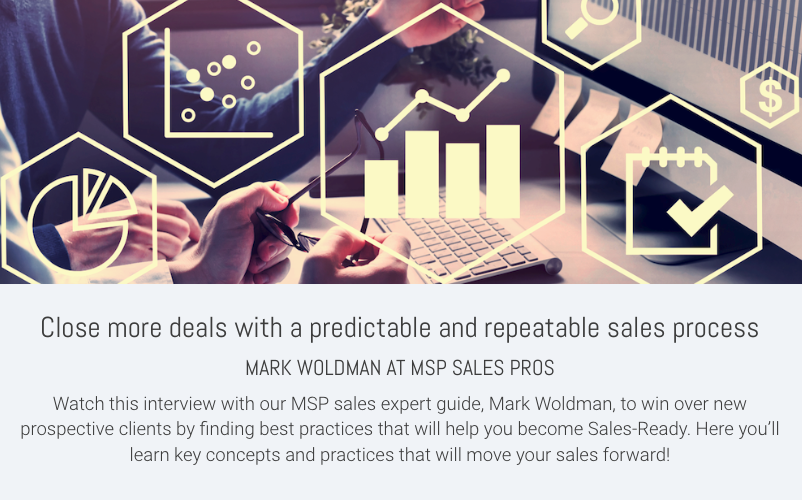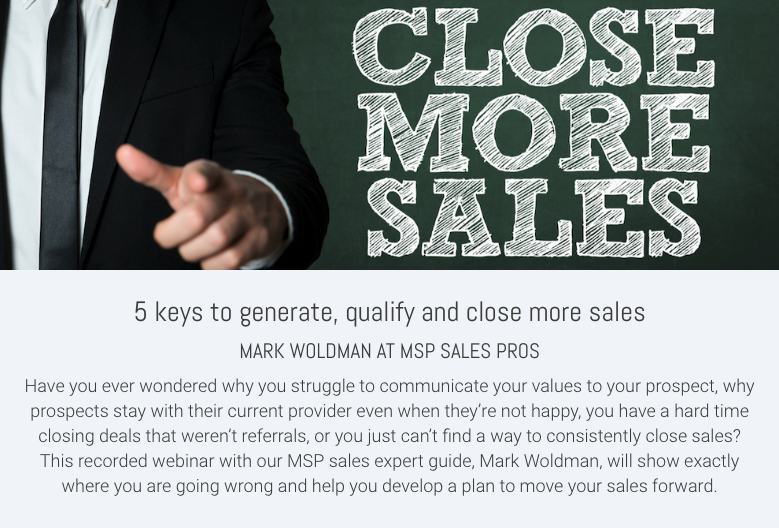
Identifying these companies is always a struggle, so here are a couple of tips to properly selling the MSP services.
I. Identify the segments we want to exclude
Identify which company size, culture, and verticals we have to exclude from communicating the values of MSP, freeing up our sales and marketing resources.
Size:
Usually under 15 users, the problems are not that visible, and the price is quite high to be able to sell the managed services. Try to sell cloud-based solutions to them and manage those like Office 365.
Culture:
If the company’s or the CEO's culture is to invent everything inside, they’ll want to do most of the jobs and minimize paying for extra skills. The T&M is ideal for them. You have to keep in mind that you are always educating your clients on definitions you want to sell MSP. For example, you may tell them good things about RMM and ProActive, then when they sign up for LogMeIn and think they are going to have the ProActive stuff.
Also, keep in mind that CEOs are often unable to take the long view about the value of the MSP. The problem here is that they are not going to understand the boundaries of your services. Therefore, they will think everything is included (which is not the case), so it’s a struggle to bill for the projects and additional services they are consuming. It will hurt your profitability because either you are working for free or you and your account managers are regularly dealing with misalignments and speed-bumps.
Verticals:
Very old-school types of verticals do not really go for MSP. They do not think of IT at all, and this is a cost for them. They do not even rely on IT - If it fails, it fails, who cares. So for them, the value is very limited.
Do not try to upgrade them. Either keep them and allocate lower-level people there and do not focus resources, or terminate some of the contracts and pass them to your competitor for a referral fee. Cleaning your portfolio can be very helpful, and most of these clients are going to change dramatically.
II. Identify the Time and Material contract that has potential and sell it
Identify the segment of the T&M contracts that have the potential, size, and culture but do not yet buy those services.
The main point to get across is that they could implement the MSP services into their business benefits. Usually we speak in “educated guesses” about these benefits. Proactive maintenance means more uptime; servers are always updated and secure. Our guess is that the terms "uptime," "update," and "secure" have specific business value to them, so they will see the overall benefit. In case they do, they already have an MSP service contract.
There are some who won’t see it. IT has nothing to do with their bailiwick. They’ve been successful without it so far and do not understand the connection between their benefits and your services. The connection so far is likely vague (general), theoretical (not practical), event-based (ex. disaster), and artificial (not real); so they do not buy.
Discovering the specifics these businesses care about and connecting them to a solution is a very difficult and time-consuming process. They may not participate in a first meeting if they don’t believe they have a problem you can solve. Therefore, you do not have even a chance to make it happen.
How we should hack the system?
 1. Platform:
1. Platform:
You must find a common ground or a common platform, and then you will be able to talk about the problem. The platform should be independent, business oriented, fast, reliable, and proven.
That means the common ground (as a IT benchmark, score, and measurement) is going to be this topic of discussion rather than your services.
2. Performance Measurement:
You have to face them with the truth in a measurable way...give them back a score and show them how much more competitive they are with IT, or show them the competitive disadvantage they now have.
This measurement process must be easy and fast. As a result, they are going to receive a score that represents their performance. Because they are currently in the Time and Material group they will score low. This means you can compare this with the standard for performance you set together, and then they will see the opportunity to improve their performance.
3. Social Proof of the Norm:
You must have social proof that the average companies are doing better on that scale. Consequently, you have to define a standard and set the standard as an official, independent norm. You have to show them benchmarks in their industry as well. Show where they are lagging against their competition overall. The norm is defined by the platform, the common ground.
4. Show the score of the MSP services:
They will see that there is a measurement and that their score is low. The small details are less important - the overall picture is low. You can then present the MSP contract, which will present a notably higher score. In ITCq, you can set your service offerings to the scores, so based on your service offering, a target score will come up, showing the exact score they could have using the different types of your services. They’ll see how they can outperform the others, and you can highlight how much and why.
5. Show them the financial benefits.
Now that the understanding of the value is there, you only still have to present the price, which should be high, but in comparison to the value, a good investment. You could set targets for 90 days and for a year, which you can guarantee. If the scores do not exceed those, you give their money back. Because everything is in your control, the scores depend on what you are doing; it is not at all a risk.
Conclusion
The way to switch to the MSP 2.0 contract faster is to divide the segments of the potential buyers and non-buyers and then use a measurable platform to create the sales for the clients who have potential.




Submit a comment